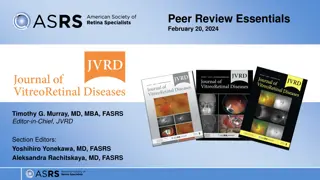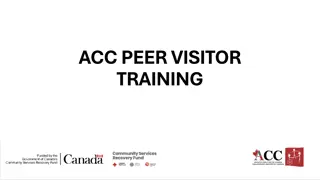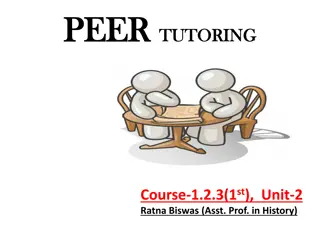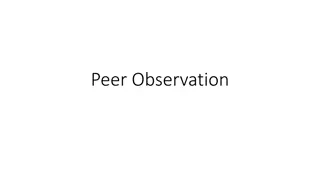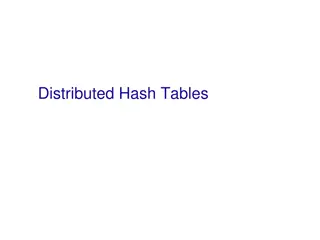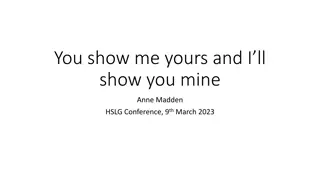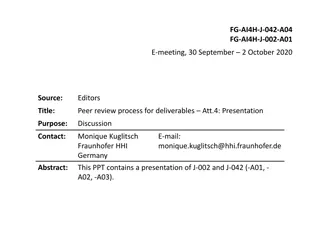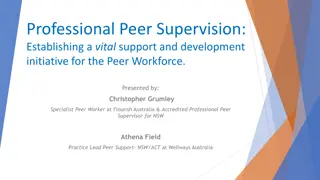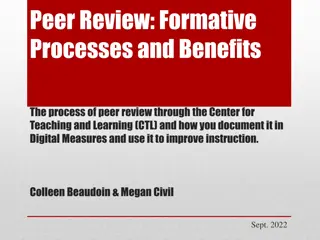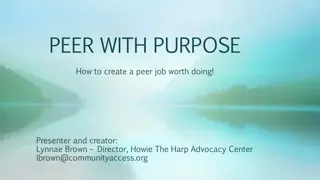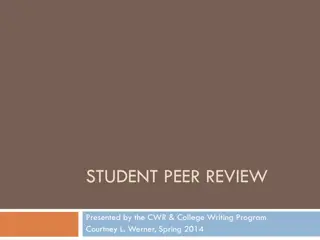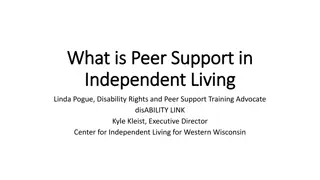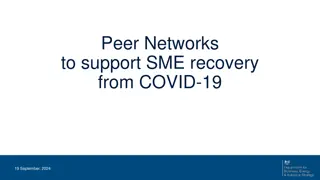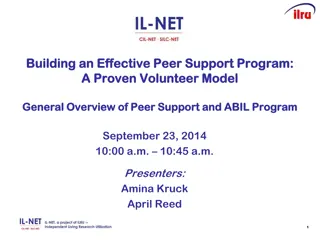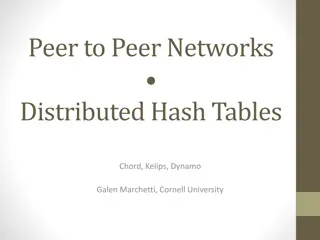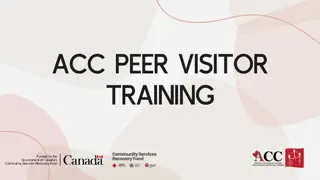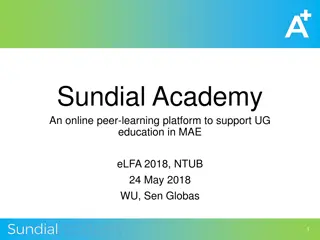Effective Practices for Peer Review in Remote Teaching
Explore strategies for conducting peer review in remote teaching environments. Discover methods for scheduling observations, comparing in-person and remote peer reviews, understanding summative vs. formative reviews, and complying with institutional policies. Enhance your teaching effectiveness with these insights.
Download Presentation

Please find below an Image/Link to download the presentation.
The content on the website is provided AS IS for your information and personal use only. It may not be sold, licensed, or shared on other websites without obtaining consent from the author.If you encounter any issues during the download, it is possible that the publisher has removed the file from their server.
You are allowed to download the files provided on this website for personal or commercial use, subject to the condition that they are used lawfully. All files are the property of their respective owners.
The content on the website is provided AS IS for your information and personal use only. It may not be sold, licensed, or shared on other websites without obtaining consent from the author.
E N D
Presentation Transcript
Welcome! We will start at 4:00.
How are you today? Place in your Fauci Level in chat!
Peer review and student ratings for remote teaching Victoria Bhavsar, Cal Poly Pomona CAFE
Peer review: Three good ideas to start Schedule observations Weeks 4-7 When you schedule an observation (1-2 hr), at that moment also calendar, that week: 0.5 1 hour to meet/talk/email ahead of time At least 2 hours to review online materials, preferably ahead of time At least 1 hour to write up your report afterwards Consider how seriously YOU want your teaching to be treated, and reciprocate
Comparing in-person and remote peer review Different Some of what to look for and places to look for it Much less able to use direct student behavior as evidence It will probably feel much more intrusive Materials review is more extensive and critical Impact Same Basic process Basic best practices Policies Time to do a good job Some of what to look for and places to look for it
Summative vs formative peer review Summative observation means graded for quality. Formative observation is for one s own benefit, to improve.
We require summative peer review CPP Policy 1328.3.3.B for tenure line faculty: Peer evaluation of teaching shall include classroom visits and a review of course syllabus and related material . CPP Policy 1336 for lecturer faculty: Student evaluations Review of materials Statement by dept chair Many departments specify classroom observation
Process for synchronous class observation & review of materials
The Ideal Process Review of course materials Construc -tive report Written response to report Pre-visit convo Post-visit convo Visit
The Normal Process from Face to Face Days: Visit Emails to schedule Hasty Report
Recommended remote protocol Steps Instructions Completed by the Instructor. Sets the context and teaching philosophy. 1. Brief pre-observation documentation Meeting between the Peer-observer and Instructor to clarify pre-observation materials and arrange for access to the course. Discuss Plan B for tech failure. Completed by the Peer-observer. Use the instrument adopted by the department. 2. Pre-meeting 3. Observation of course: Materials & synch mtng Completed by the Peer-observer using data gathered in Steps 1-3. 4. Complete report
For synchronous observation: Setting up Join on time Mute microphone (of course) Turn off camera but ensure there is a picture of you Make sure your correct name shows on the tile If instructor introduces you, turn camera on and wave. Say hi in the chat Concentrate on the job no email! Stay the whole time* Implement your Plan B for tech failure if needed
Overview of suggested instruments Quality Matters Seven Principles Mix and Match Specific, long Materials & meetings Non-specific, short Materials & meetings Choose elements of each or others
Suggested Instruments See OneDrive Step 3: Observation of Blackboard Course Site, Module or Lesson, and Synchronous Meeting Link
After observing: Writing a useful report Be organized, clear, and concise Be honest, accurate, and constructive Focus on controllable things
Four departmental best practices Devote a faculty meeting (or more) to discussing the purpose of peer observation, essential elements of excellent remote teaching, and agreement about what counts as evidence Train faculty on observing and reporting Designate experienced faculty with established good teaching reputations as observers, and visibly appreciate their efforts Give criteria at the beginning of the semester; have it posted somewhere so instructors always have access
Elements for a non-damaging peer review program Clarity on essential elements of excellent teaching, with flexibility for individual academic freedom Agreement about what counts as evidence for excellence Consistent instruments and reporting templates Bonus: Trusted, expert, trained peer reviewers
Elements for an outstanding peer review program Clarity of purpose what do we want to achieve? Clear policies in congruence with the purpose Clarity on essential elements of excellent teaching, with flexibility for individual academic freedom Agreement about what counts as evidence for excellence Consistent instruments and reporting templates Trusted, expert, trained peer reviewers
Pandemic student ratings are likely to be disappointing. Student ratings are blunt instruments, like BMI. Understand their limitations, AND...
Treat them seriously as data. High quality instruments Good deployment practices Appropriate data analysis and reporting
Good student rating instruments Pedagogically neutral items Well-constructed items Useful items Specific items Center the student experience, i.e., are written about the student experience Have students assess things the instructor can influence
Student rating deployment getting responses http://www.schreyerinstitute.psu.edu/IncreaseSRTERespRate/ http://www.schreyerinstitute.psu.edu/IncreaseSRTERespRate/ Make sure students are aware of the SR s Explain the SR process to students Provide reminders when the SR s are active Make clear that you value student feedback Mention improvements made to the course in response to past SR s Schedule time in your synchronous class for completing SR s Create a feedback culture (e.g., collect other feedback during the semester) Build rapport with students throughout the semester
Student rating analysis & reporting Overall performance rating of this instructor, 2015 vs 2019 NOTE: SR s are not often normally distributed; they are skewed. Normal distribution would indicate a problem DO: Look at results across the scale, not exclusively at mean, median, and mode DO: Use a criterion-based approach, not norm-referenced DON T: Include control items in overall mean or median REMEMBER: Blunt instrument. Do not make faculty explain small changes or be worried about a small number of students.
Supporting faculty to improve when needed Educate yourself about student ratings (Linse, 2017, https://doi.org/10.1016/j.stueduc.2016.12.004) Speak up early Be developmental rather than prescriptive; faculty must lead their own work Encourage focus on changes that will affect students overall experience, rather than small tweaks Transparency, organization, engagement Encourage and reward engagement with other faculty


